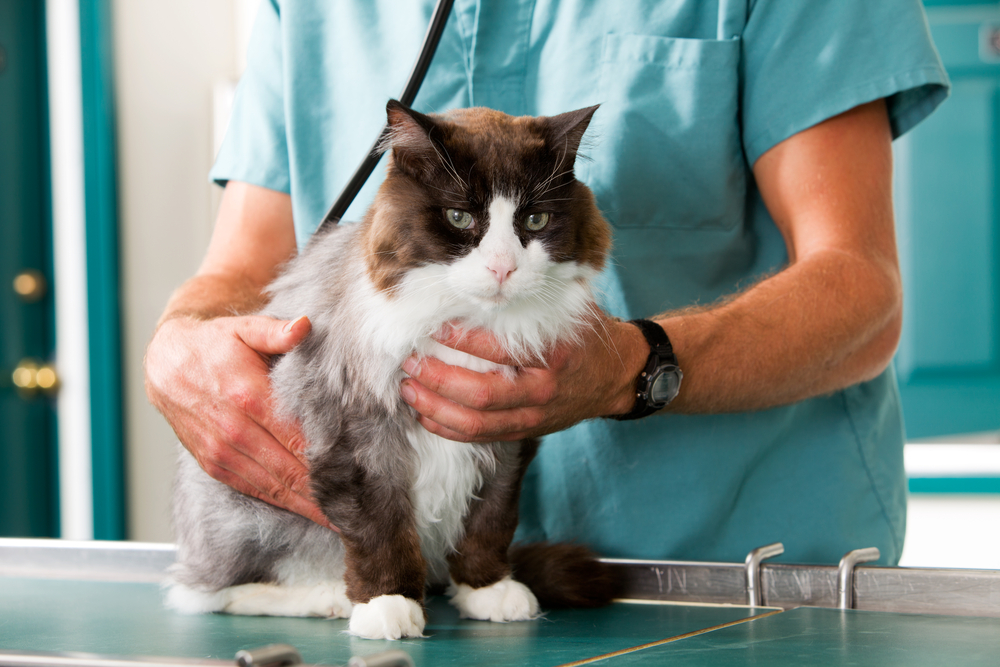

Lipomas are soft masses or tumors that lie beneath the surface of the skin. They are usually palpable, with limited mobility under the skin. The overlying skin is usually not affected. Over time they can grow larger and can impede movement if they are located between the legs or low on the chest. It is important to recognize that additional masses do not necessarily indicate malignancy or metastasis. Because other cutaneous masses may appear similar to lipomas, it is recommended that each mass be checked.
Another sub-classification of benign lipomas is the infiltrative lipoma. These typically invade locally into muscle tissue and fascia and may need to be removed.
Conversely, liposarcomas are malignant and can spread (metastasize) to the bone, lungs, and other organs. These tumors are rare, but are demonstrative of the need to examine each subcutaneous mass individually.
Most lipomas feel soft and movable under the skin. They usually will not cause discomfort unless they are in a location where normal movement is disrupted, like in the axillary region under the front leg. Often they are located on a cat's belly or trunk, but can be found anywhere on the body.
Your veterinarian will perform a complete physical on your cat, checking for all palpable masses. A fine needle aspirate of the mass will indicate whether it is in fact a benign lipoma. Diagnosis of this is essential, as other more worrisome masses can mimic a lipoma. If the aspirate is inconclusive, surgical removal and a histopathology may be necessary to arrive at a clear diagnosis.
Infiltrative lipomas may require computed tomography (CT) or magnetic resonance imaging (MRI) to adequately understand the mass and its location in the tissue. This is important information for the surgeon to decide how much of the mass can or should be removed and the approach that will be needed for surgery.
Most cats will not need surgical removal of an existing lipoma. However, if the lipoma is restricting movement in any way it will be necessary to remove the lipoma for your cat's comfort. In addition, if diagnostic tests indicate that the mass may be a more aggressive tumor, removal of the mass may be advised while your cat is still under anesthesia. Removal tends to be a simple process if the mass is small, because lipomas are benign, meaning that they have not attached strongly to the body, and a large margin is not needed.
However, one type of lipoma, the infiltrative lipoma, requires a more complex procedure. As the name implies, infiltrative lipomas invade into muscle tissue and fascia and can make complete surgical excision difficult. Radiation therapy may also be used for infiltrative lipomas; alone, or in conjunction with surgical excision.
Other subcutaneous masses, like mast cell tumors, can mimic the appearance of a lipoma. It is of extreme importance that every mass be evaluated individually. You will need to monitor your cat's lipomas, noting any changes in size or location.
 Low Blood Sugar in Cats
Hypoglycemia in Cats
The blood sugar, or glucose,
Low Blood Sugar in Cats
Hypoglycemia in Cats
The blood sugar, or glucose,
 Nerve Disorder Affecting Multiple Nerves in Cats
Peripheral Neuropathy (Polyneuropathies) in Cats
Nerve Disorder Affecting Multiple Nerves in Cats
Peripheral Neuropathy (Polyneuropathies) in Cats
 Bleeding of the Retina in the Eye in Cats
Retinal Hemorrhage in Cats
Retinal hemorrhage is
Bleeding of the Retina in the Eye in Cats
Retinal Hemorrhage in Cats
Retinal hemorrhage is
 Bone Tumors/Cancer in Cats
Osteosarcoma
Osteosarcoma refers to a type of bon
Bone Tumors/Cancer in Cats
Osteosarcoma
Osteosarcoma refers to a type of bon
 How to Introduce Two Cats
How to Introduce Two Cats
How to Intro
How to Introduce Two Cats
How to Introduce Two Cats
How to Intro
Copyright © 2005-2016 Pet Information All Rights Reserved
Contact us: www162date@outlook.com